As a white heterosexual male I am definitely the right expert to talk about WomenInSTEM. Especially women of colour in STEM. Seriously though, I am not sure it is helpful to the feminist cause or to the science in general when dishonest cheaters get all the positions, grants, admiration and influence while qualified and honest female researchers are shown the door because they didn’t “perform” as well as the failed scientists we are told to admire.
So here I want to talk about two US researchers, Ashani Weeraratna and her friend Valerie Weaver. The latter featured already in Friday Shorts.
As the Johns Hopkins University informs us about their professor,
“Ashani Weeraratna is a groundbreaking researcher exploring crucial questions about the role aging plays in cancer.”
Weeraratna’s research field is melanoma. She also wrote a book, titled “Is Cancer Fraud Inevitable?“, which I enthusiastically answer with yes. Pardon, the book is called “Is Cancer Inevitable?“, and it reassures us that “Dr. Ashani Weeraratna is at the forefront of this new level of care.” Basically, any moment now she will find a cure for melanoma. And her high-profile papers prove it.
Before you see how exactly Dr Weeraratna’s is curing cancer, you should know that she is currently a member of the NIH National Cancer Institute’s National Cancer Advisory Board, appointed by the President Joe Biden himself. My sources claim she is constantly travelling to conferences in her capacity as NCI board member and is rarely present in her lab. If true, this is a problem, because Weeraratna’s lab members have been very naughty behind her back. Bigger problem: the boss failed to grasp it yet.
Also interesting: much of the data fudgery was caught because Nature journals demand from authors to publish raw data in Supplementary material. Several science cheaters were caught this way, let me remind you of a case of Carlos Lopez-Otin:
Lopez-Otin and Daley retract Nature Cell Biology paper
The 2015 Nature Cell Biology paper by the Spanish cancer researcher Carlos Lopez-Otin and his US partner George Q Daley, stem cell titan and dean of Harvard Medical School, is being retracted. First author and Lopez-Otin’s student Clara Soria-Valles caused Daley even more trouble: her next groundbreaking paper was meant to be already published, but…
So here is a Nature paper from 2016. It has many, many authors, who sure did all possible important contributions but it seems nobody bothered to check the actual data.
Amanpreet Kaur , Marie R. Webster , Katie Marchbank , Reeti Behera , Abibatou Ndoye , Curtis H. Kugel , Vanessa M. Dang , Jessica Appleton , Michael P. O’Connell , Phil Cheng , Alexander A. Valiga , Rachel Morissette , Nazli B. McDonnell , Luigi Ferrucci , Andrew V. Kossenkov , Katrina Meeth , Hsin-Yao Tang , Xiangfan Yin , William H. Wood , Elin Lehrmann , Kevin G. Becker, Keith T. Flaherty, Dennie T. Frederick, Jennifer A. Wargo, Zachary A. Cooper, Michael T. Tetzlaff, Courtney Hudgens, Katherine M. Aird, Rugang Zhang, Xiaowei Xu, Qin Liu, Edmund Bartlett, Giorgos Karakousis, Zeynep Eroglu, Roger S. Lo, Matthew Chan, Alexander M. Menzies, Georgina V. Long, Douglas B. Johnson, Jeffrey Sosman, Bastian Schilling, Dirk Schadendorf, David W. Speicher, Marcus Bosenberg, Antoni Ribas, Ashani T. Weeraratna sFRP2 in the aged microenvironment drives melanoma metastasis and therapy resistance Nature (2016) doi: 10.1038/nature17392
There are many problems with that paper, judging from the uploaded raw data in supplementary material. Lots of it simply doesn’t match the published figures. Where it matches, it becomes clear the authors did not provide the correct loading controls for their western blot experiments, using so-called “library loading controls” of unclear provenance instead. This goes even against Nature‘s own guidelines. Like here:

But there are even much bigger problems. It seems, datasets were manipulated and inconvenient experimental results were removed to produce “significance” where there was none.


It seems, the asterisks were labels for data points to be removed. Like in this case:

However, only data for 8 young mice and 9 aged mice were provided in the supplement (see below). Likewise, there are many measurements missing for these mice?“
And here:

The supplemental data supporting this figure is missing 2/10 (sFRP2 cohort) and 6/10 (PBS) of the initial tumor measurements. Of equal importance, the authors did not provide the final measurement at the endpoint of the experiment.“
It also seems that “inconvenient” mice were removed from experiments while elsewhere “convenient” extra human patients were added to achieve the desired clinical results:


However, 81 patients were actually used for deriving the statistics reported in the article. In particular 2 additional patients over age 65 where used for the statistics.“
8 years later, in 2022, that highly successful lab published yet another Nature paper. With very similar problems with raw data.
Mitchell E. Fane , Yash Chhabra , Gretchen M. Alicea , Devon A. Maranto , Stephen M. Douglass , Marie R. Webster , Vito W. Rebecca , Gloria E. Marino , Filipe Almeida , Brett L. Ecker , Daniel J. Zabransky , Laura Hüser , Thomas Beer , Hsin-Yao Tang , Andrew Kossenkov , Meenhard Herlyn , David W. Speicher , Wei Xu , Xiaowei Xu , Elizabeth M. Jaffee , Julio A. Aguirre-Ghiso, Ashani T. Weeraratna Stromal changes in the aged lung induce an emergence from melanoma dormancy Nature (2022) doi: 10.1038/s41586-022-04774-2
Again, western blot data without a proper loading control, unlike the figure claims:

This was just one example of gels with “library” loading controls. Not even that, the loading controls seem to have been added randomly:

Maybe the library loading controls were needed to compensate for accidental misloading of gels? Like here, an antibody which produces a lot of unspecific signal leaves not a single pixel in one gel lane, as if there was never any cell lysate loaded at all:

Weeraratna tried to dissuade some of these concerns on PubPeer, but more questions arose. Like, why were the figures partially changed between the peer-reviewed Nature paper and the preprint version (Fane et al 2020)?

Again, strange numbers were found in the raw data Excel sheets. Sometimes these numbers very unexpectedly repeated themselves.

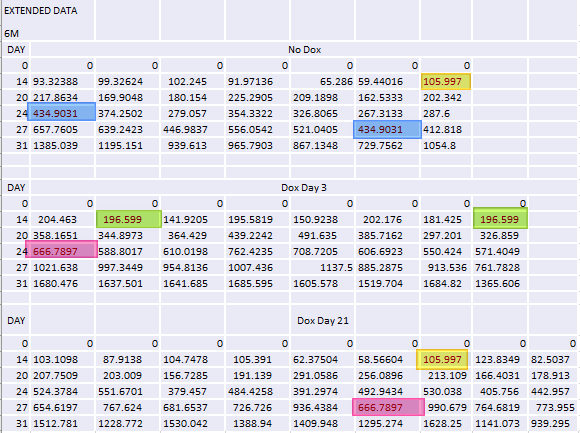


Of course there were image duplications also:
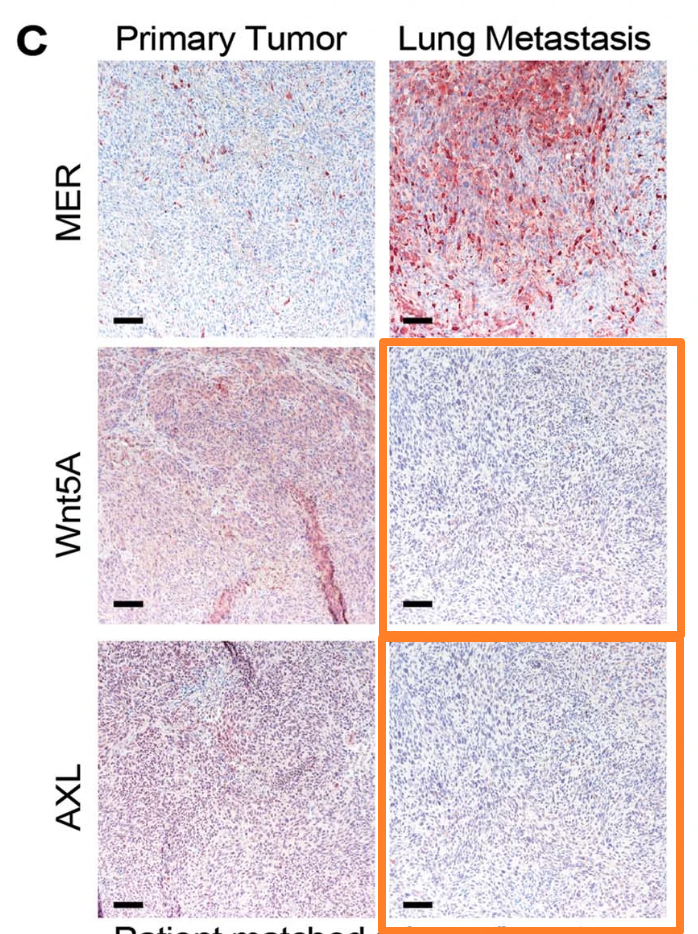

There were so many questions that Weeraratna stopped replying.
Manchester: “research misconduct concerned only one member of the research group”
The University of Manchester found out that someone has secretly manipulated data in the papers of their star cancer researcher, Richard Marais. Who might that be?
Luckily, at Cell Press nobody ever will ask authors for raw data (research integrity goes against the company philosophy), so the sleuths had to do with what they found in the published figures. Luckily, Cell Press doesn’t retract papers for fraud unless all authors agree, so there.
Marie R. Webster, Mitchell E. Fane , Gretchen M. Alicea , Subhasree Basu , Andrew V. Kossenkov , Gloria E. Marino , Stephen M. Douglass , Amanpreet Kaur , Brett L. Ecker , Keerthana Gnanapradeepan , Abibatou Ndoye , Curtis Kugel , Alexander Valiga , Jessica Palmer , Qin Liu , Xiaowei Xu , Jessicamarie Morris , Xiangfan Yin , Hong Wu , Wei Xu , Cathy Zheng, Giorgos C. Karakousis, Ravi K. Amaravadi, Tara C. Mitchell, Filipe V. Almeida, Min Xiao, Vito W. Rebecca, Ying-Jie Wang, Lynn M. Schuchter, Meenhard Herlyn, Maureen E. Murphy, Ashani T. Weeraratna Paradoxical Role for Wild-Type p53 in Driving Therapy Resistance in Melanoma Molecular Cell (2020) doi: 10.1016/j.molcel.2019.11.009




mTOR: conclusions not affected?
David Sabatini, remember that story? Well, it seems the conclusions were not affected. I take an ill-informed look at the mTOR signalling research field, to understand how photoshopped data gets to be independently verified by other labs.
More image duplications, in a cancer research journal (impact factor 38), published by the society AACR and edited by the Weill Cornell professor Lewis Cantley, an expert for fake data:
Gretchen M. Alicea , Vito W. Rebecca, Aaron R. Goldman , Mitchell E. Fane 

But the additional cell lines displayed in Supp Fig S1K seem to be duplicates of those displayed in Figure 1G (see the green and yellow squares).“
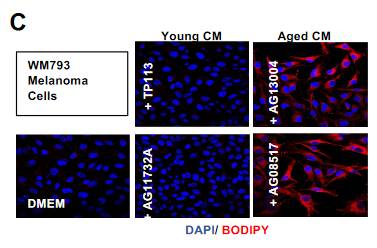


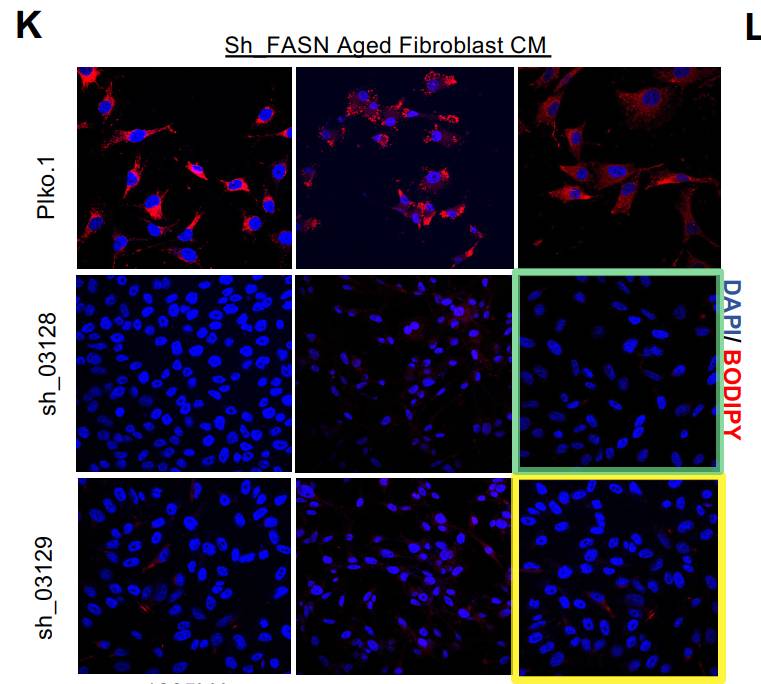

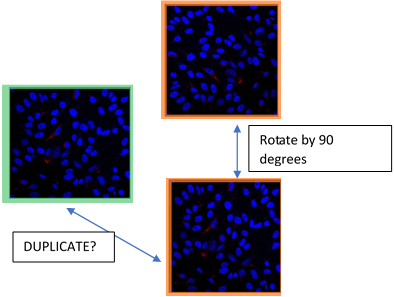
See Green panel compared to orange panel.”

Imagine what else could be found if the authors had to upload their full-length gels and excel sheets, like at Nature. But the American Association for Cancer Research doesn’t seem to believe in raw data. More image duplications, in same journal:
Michael P. O’Connell , Katie Marchbank , Marie R. Webster , Alexander A. Valiga , Amanpreet Kaur , Adina Vultur , Ling Li , Meenhard Herlyn , Jessie Villanueva , Qin Liu , Xiangfan Yin , Sandy Widura , Janelle Nelson , Nivia Ruiz , Tura C. Camilli , Fred E. Indig , Keith T. Flaherty , Jennifer A. Wargo , Dennie T. Frederick , Zachary A. Cooper , Suresh Nair, Ravi K. Amaravadi, Lynn M. Schuchter, Giorgos C. Karakousis, Wei Xu, Xiaowei Xu, Ashani T. Weeraratna Hypoxia induces phenotypic plasticity and therapy resistance in melanoma via the tyrosine kinase receptors ROR1 and ROR2 Cancer Discovery (2013) doi: 10.1158/2159-8290.cd-13-0005
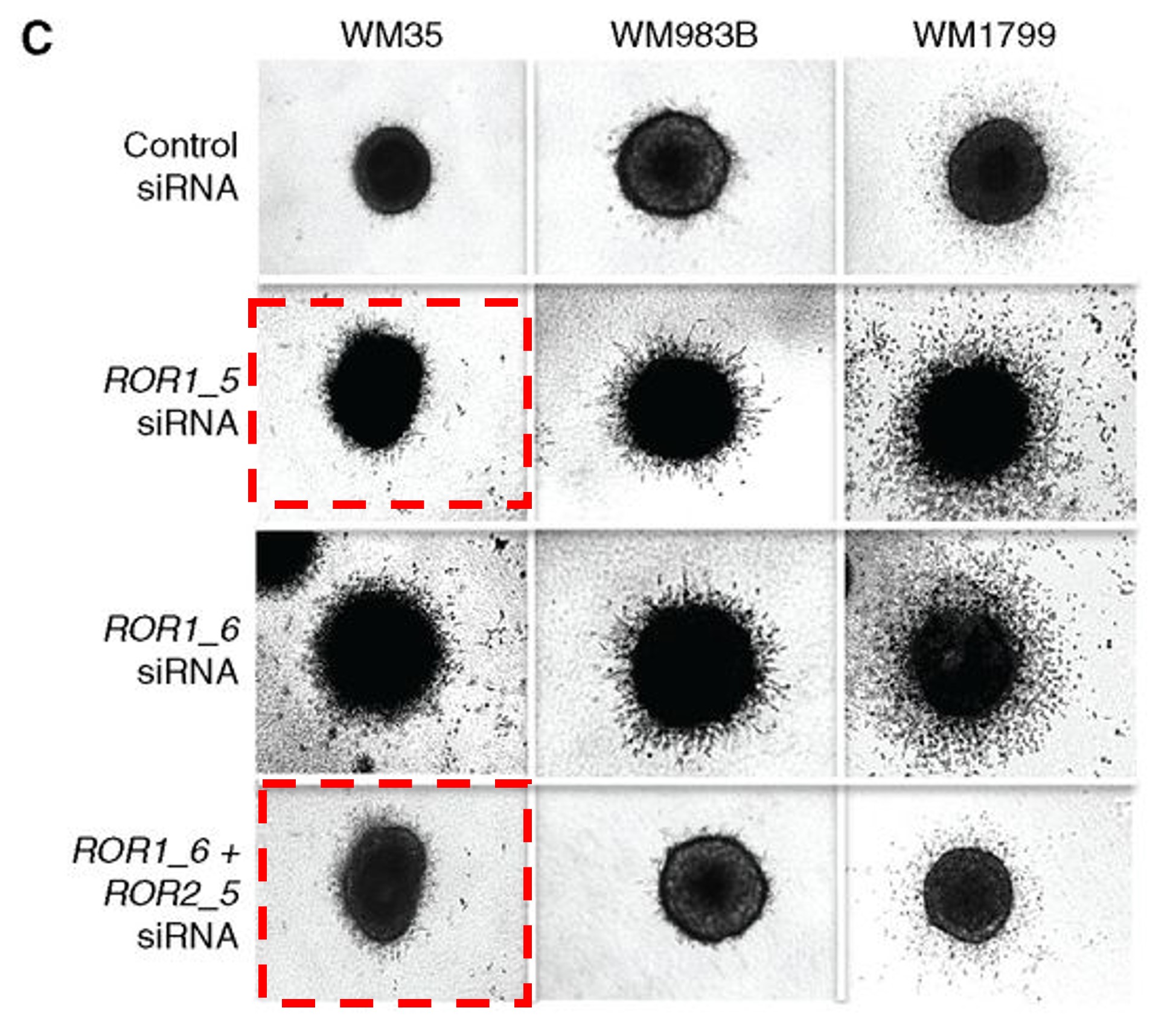

Weeraratna’s papers have so many authors that there will always be someone to blame if need arises. Or in fact nobody, the swarm approach to confuse the predating sleuths and investigators? What about the boss though? Johns Hopkins University is informed, they might even investigate Weeraratna. Even their Nobelist Gregg Semenza recently had to retract papers for fraud, blame my reporting if you like.
Gregg Semenza: real Nobel Prize and unreal research data
“Even after people have been telling you for, you know, 20 years or more that it’s going to happen, no one expects it.” -Gregg Semenza, Nobel Prize winner 2019
Here are more duplicated images by Weeraratna, in another AACR journal:
Mitchell E. Fane, Brett L. Ecker , Amanpreet Kaur , Gloria E. Marino , Gretchen M. Alicea , Stephen M. Douglass , Yash Chhabra , Marie R. Webster , Andrea Marshall , Richard Colling , Olivia Espinosa , Nicholas Coupe , Neera Maroo , Leticia Campo , Mark R. Middleton , Pippa Corrie , Xiaowei Xu , Giorgos C. Karakousis , Ashani T. Weeraratna sFRP2 Supersedes VEGF as an Age-related Driver of Angiogenesis in Melanoma, Affecting Response to Anti-VEGF Therapy in Older Patients Clinical Cancer Research (2020) doi: 10.1158/1078-0432.ccr-20-0446



AACR conjures undead Count Fakula Michael Karin
What better distraction than the COVID-19 pandemic to revive one of the spookiest parasites in cancer research? AACR uses the COVID-19 cover to award Michael Karin, for his over 50-paper-strong record of data fakery.
Sloppy science was already present in Weeraratna’s papers from her postdoc period:
Ashani T Weeraratna, Dorothea Becker , Kristen M Carr , Paul H Duray , Kevin P Rosenblatt , Sherry Yang , Yidong Chen , Michael Bittner , Robert L Strausberg , Gregory J Riggins , Urs Wagner , Olli P Kallioniemi , Jeffrey M Trent , Patrice J Morin , Paul S Meltzer Generation and analysis of melanoma SAGE libraries: SAGE advice on the melanoma transcriptome Oncogene (2004) doi: 10.1038/sj.onc.1207337

corresponding to CD74 staining is shown at both low
power (Figure 3, A–F) and high power (Figure 3, S–X).”
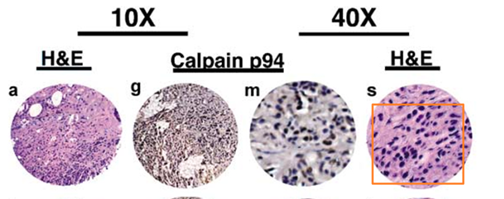
Weeraratna never replied to my emails.
Now, she will probably log all of the above into the category of racist harassment against herself. Whatever, I am more concerned about the feelings of women, persons of colour and visa-dependent foreigners, who came to Weeraratna’s elite lab as honest young scientists with ideals and motivations, only to face the research culture which produces such kind of science. How many of them were corrupted into research fraud? How many left in disappointment? How many were made to leave the lab and the country because they didn’t deliver the right results? Those aren’t rhetorical questions, I hope this article finds readers among Weeraratna’s current and past lab members.
OK, I am very sure Weeraranta’s friend Valerie Weaver was never a target of racist harassment. She is being harassed anyway, or so she claims.
Weaver is another role model for all the women in STEM. Her University of California San Francisco (UCSF) informs us:
“In her 23 years as a scientist, Valerie M. Weaver, PhD, has overcome countless challenges – lack of funding, dismissive colleagues, and breaking ground in a new field. Recognized for her contributions, Weaver continues to show the scientific community a thing or two.
In late 2021, Weaver, professor of Surgery; director of the Center for the UCSF Bioengineering and Tissue Regeneration; and co-director Bay Area Center for Physical Sciences and Oncology, received the 2022 Shu Chien Award from the Biomedical Engineering Society (BMES).
Weaver is the first women to receive the award which recognizes an individual who has made exceptional contributions to the field of cellular and molecular bioengineering. These contributions include groundbreaking scientific advances, the development of programs to support this emerging field, the mentoring and training of the next generation of scientists, and the advancement of diversity and inclusivity. “
Now I will show the community a thing or two.
All found by Elisabeth Bik actually:
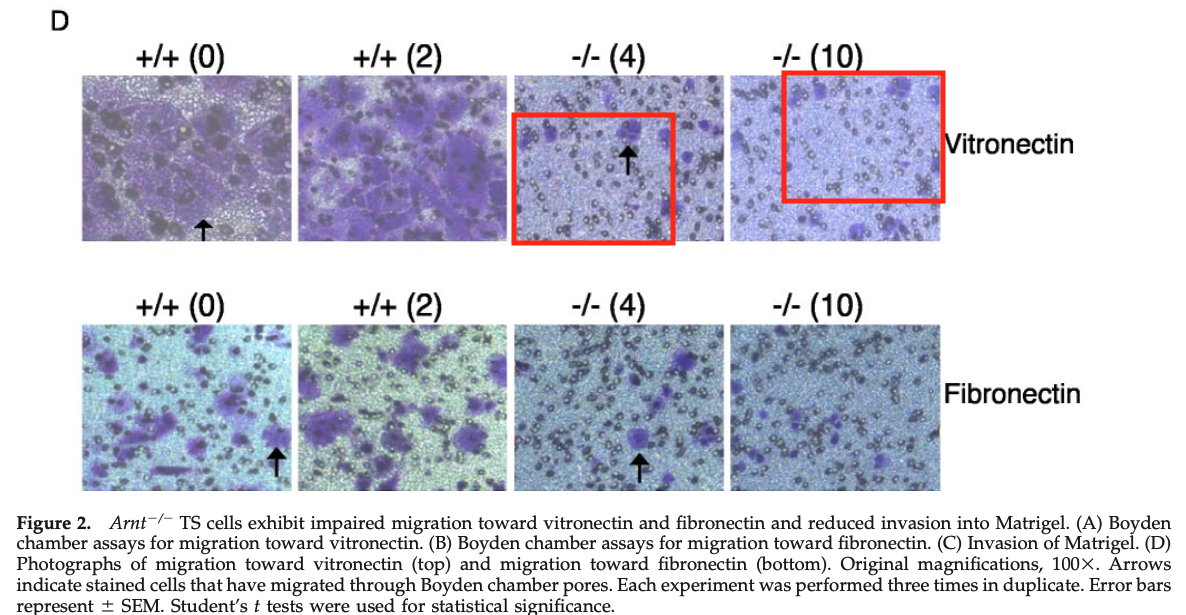



You may notice that with Weaver’s papers it’s quite different than with Weeraratna’s. With the later, one often needs access to full-length gels, excel sheets and other raw data to prove data manipulation. Obviously this Johns Hopkins lab is much more professional in covering up tracks, which is exactly why Weaver at UCSF is in huge trouble now, while Weeraratna probably is happily jet-setting from conference to conference, preparing yet another Nature paper.
The data integrity problems in Weaver’s publications are a low-hanging fruit. Other sleuths joined the search for duplicated treasures:
Michael S. Samuel , Jose I. Lopez , Ewan J. McGhee , Daniel R. Croft , David Strachan , Paul Timpson , June Munro , Ewald Schröder , Jing Zhou , Valerie G. Brunton , Nick Barker , Hans Clevers , Owen J. Sansom , Kurt I. Anderson , Valerie M. Weaver , Michael F. Olson Actomyosin-Mediated Cellular Tension Drives Increased Tissue Stiffness and β-Catenin Activation to Induce Epidermal Hyperplasia and Tumor Growth Cancer Cell (2011) doi: 10.1016/j.ccr.2011.05.008

Eventually, Weaver conceded that there were problems in her papers. Maybe that’s because four of her lab’s papers are under investigation by UCSF, which also took hold of all the raw data, including old floppy disks. Probably that’s why Professor Weaver now totally lost her composure on PubPeer, here:
L Damiano , K M Stewart , N Cohet , J K Mouw , J N Lakins , J Debnath , D Reisman , J A Nickerson , A N Imbalzano, V M Weaver Oncogenic targeting of BRM drives malignancy through C/EBPβ-dependent induction of α5 integrin Oncogene (2014) doi: 10.1038/onc.2013.220

In October 2022, Weaver kept insisting PubPeer:
“Independent experiments NOT duplicated images“
and
“i would appreciate it if you did not try to tarnish my reputation with these types of accusations – these are legitmate stainings […] they are double stained organoids – it would help if you actually READ the paper – you are slandering my name when clearly there is nothing amiss here at all – it is very upsetting“
Torturing Small Animals
Animal abuse and bad science go hand in hand. Meet professors Ute Moll, Jordi Muntané, Sam W Lee and others.
Elisabeth Bik, Cheshire and others kept telling Weaver that it wasn’t about the nature of stainings, but about images reused to stand in for totally different experiments. In February 2023, Weaver admitted the duplications:
“No intent to deceive was made and if there was an inadvertent error this will immediately be corrected and we will work with oncogene editors The first author and second author refuse to respond to any email or linked in efforts to contact them Ucsf ethics group is currently looking through all data I stand by my trainees and consider them innocent of any misconduct“
BethAnn McLaughlin affair: now also research fraud?
BethAnn McLaughlin is a liar, a racist, an embezzler, and a dangerous manipulative bully. But surely she is at least a great neuroscientist?
And then Weaver exploded (highlight mine, I archived her PubPeer rant):
“I’m the senior author My response was to state there was no fraud That’s an entirely different comment I never stated there was no potential for an error although I do believe nothing is amiss Your constant attacks and comments treat the work as somehow nefarious and purposely deceptive It is inappropriate and unfair the way my groups work has been attacked by you and others If you are not dr Bik then why is your name not stated? What have you got to hide? What gives you the right to attack others? Your comments suggest I am to simply roll over and accept that your accusations are sound and humbly grovel
I stand behind my trainees – each set of studies conducted in my lab are team efforts – this is done purposely to ensure there are multiple checks and balances Studies are done using multiple overlapping approaches so that loss of function gain of function – description – etc ensures we are reasonably accurate and that our final conclusions are sound If there was any intent to deceive there would need to be a group conspiracy – which is ridiculous
Hence my statement that my lab does not condone support or ever publish fraudulent data
Could there be an inadvertent error Of course I don’t dispute this But I do dispute your accusations of intent This is a very different issue
Many of dr Biks highlighted comments regarding suspicious data in her teams recent posts are completely unfounded and upon examination many of claims of image duplication accusations are not at all true If dr Bik and her team truly wanted to ensure data accuracy then I suggest she and her team would have worked honestly and carefully with my team as opposed to behaving in the current manner
What I would like to do in future is to obtain dr Biks image analysis software so that my team can screen all final figures to ensure no inadvertent errors are introduced in the future We do carefully check every figure for potential errors Before first submission and once again after revision But true I don’t sit over my trainee to check their final image composition just prior to sending the article to press So you can charge me with not watching every single act my trainees execute – is that sloppiness – no- is it understandable – absolutely In fact several colleagues attest to themselves finding inadvertent errors in figures – just like a review of text can repeatedly miss a typo or spelling error etc – which is why spell check is important
Dr Biks claim that potential errors are an intent to deceive is what I take offense with – I never have never would and never will condone such behavior and yes such an accusation does upset me immensely
So I find Your comment to be offensive and inappropriate
Out of almost 200 articles thus far a few minor errors have been identified
In fact Dr Bik and her attack team – which I gather you are part of – highlighted a duplicate image in an old article that was already identified by my team years ago and an erratum was published – the fact she and her team did not believe me is insane – fortunately the journal sent the reference link where the erratum was published
Shame on you and your colleagues for wasting time and energy attacking innocent mistakes
Moreover other accusations by Bik and her team are so ridiculous they don’t even merit a response
However I doubt you agree with me My impression is that you are not interested in finding errors and correcting these – rather you smell blood and want to attack and destroy people – for the mere pleasure of doing so And of course you remain anonymous
These are very different matters Ie intent to deceive versus honest errors
Regardless you’ve gotten your pound of flesh already So enjoy yourself I’m sure you are smugly congratulating yourself
There’s no there there and I have every reason to believe my groups reputation will be cleared by ucsf review“
Melo and Kalluri defend discredited Nature paper with preprint, where they admit data “adjustments”
Sonia Melo, the Portuguese cheater scientist and her former US-boss Raghu Kalluri issued some days ago a biorxive preprint, which sole purpose is to defend their discredited Nature paper from 2015. There, they originally claimed to have found a unique biomarker for early pancreatic cancer, a much hailed promise to save lives of many cancer…
As you saw, Bik found a number of papers from Weaver’s lab with problematic data (currently over a dozen on PubPeer). Like this one, flagged in November 2022, its co-author is none other but the MD Andersons mega-cheater Raghu Kalluri.
Hanane Laklai , Yekaterina A Miroshnikova , Michael W Pickup , Eric A Collisson , Grace E Kim , Alex S Barrett , Ryan C Hill , Johnathon N Lakins , David D Schlaepfer , Janna K Mouw , Valerie S LeBleu , Nilotpal Roy , Sergey V Novitskiy , Julia S Johansen , Valeria Poli , Raghu Kalluri , Christine A Iacobuzio-Donahue, Laura D Wood, Matthias Hebrok, Kirk Hansen, Harold L Moses, Valerie M Weaver Genotype tunes pancreatic ductal adenocarcinoma tissue tension to induce matricellular fibrosis and tumor progression Nature Medicine (2016) doi: 10.1038/nm.4082

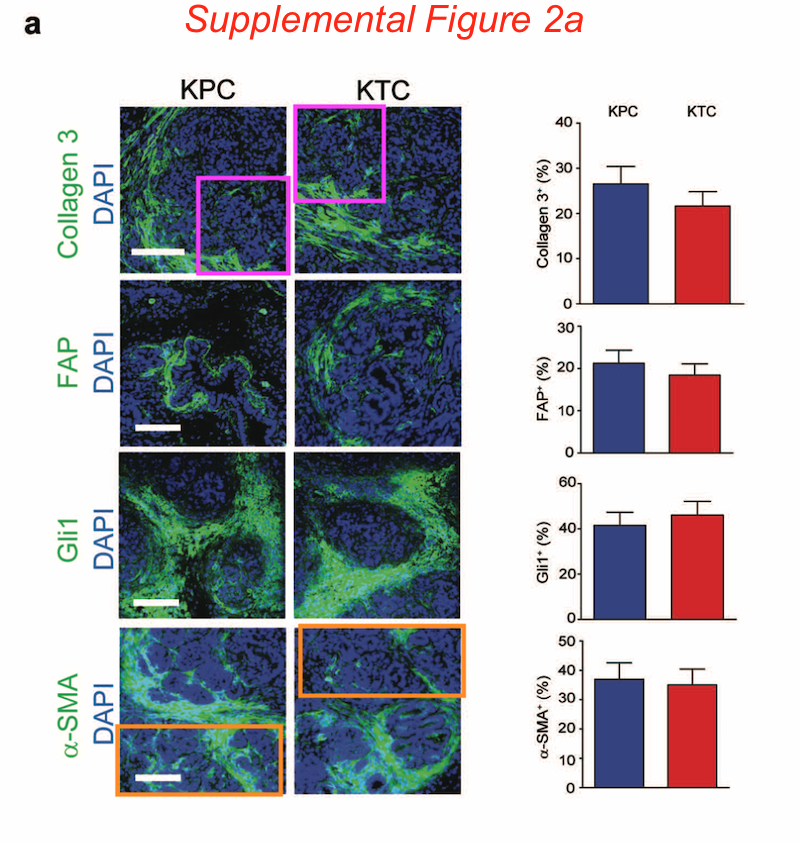
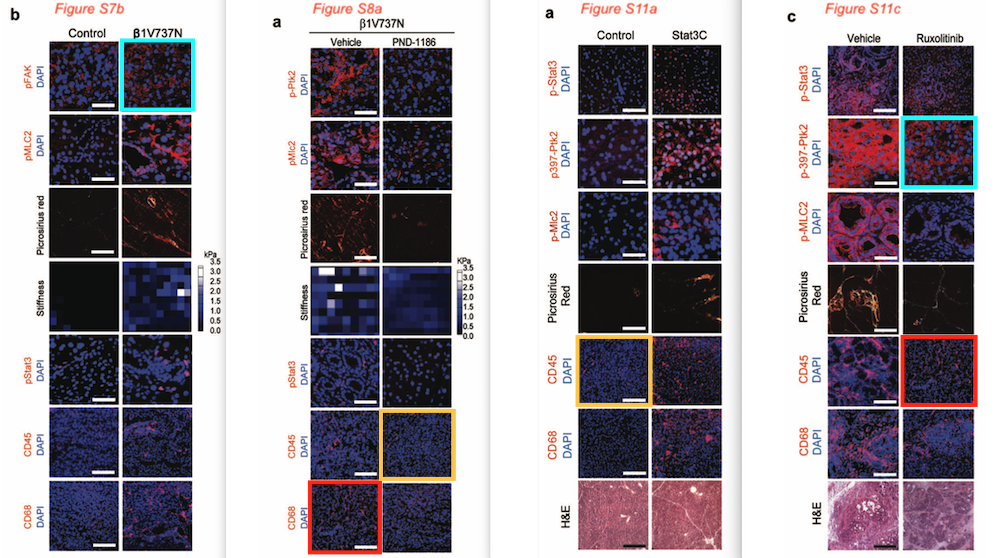
Weaver commented in February 2023 ago:
“The majority of the images flagged by Dr Bik and her team are inaccurate accusations of potential errors That being said I am obviously keen on carefully reviewing all images to ensure there are no errors present I stand by my trainees and maintain no nefarious activity was present when preparing this article.“
No mention of the pound of flesh this time, meh. In another case Weaver sounded almost reasonable (but not quite):
Yekaterina A. Miroshnikova , Janna K. Mouw , J. Matthew Barnes , Michael W. Pickup , Johnathan N. Lakins , Youngmi Kim , Khadjia Lobo , Anders I. Persson , Gerald F. Reis , Tracy R. McKnight , Eric C. Holland, Joanna J. Phillips , Valerie M. Weaver Tissue mechanics promote IDH1-dependent HIF1α–tenascin C feedback to regulate glioblastoma aggression Nature Cell Biology (2016) doi: 10.1038/ncb3429
Bik: “I might be misinterpreting the labels, but could the authors check if these are indeed the same experiments?“
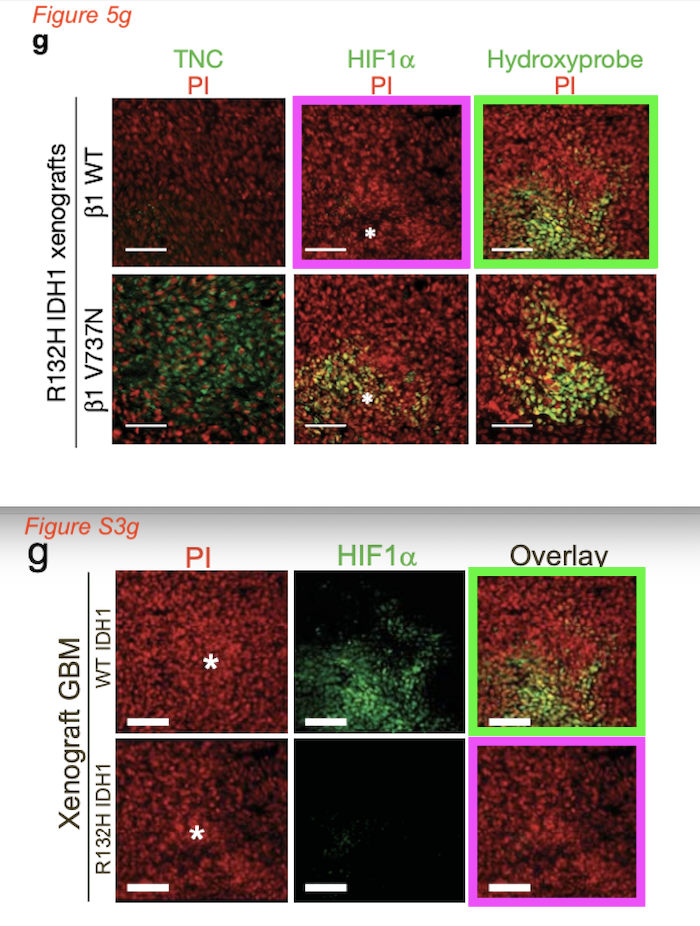
Also in February 2023, Weaver finally reacted, for a change thanking Bik but blaming the journal for fudging her data:
“We thank Dr Bik and her team for identifying the image error […] We have contacted the journal editors with the correct image that they can verify was present throughout the review process The erratum will be published […] It is alarming when an anonymous individual whose credentials are not stated also feels they can make these accusations Perhaps this individual should contact the journal and formally request to review the article together with 2-3 qualified scientists and the final assessment will be left with the editors“
The “anonymous individual”, i.e. Elisabeth Bik, was confused. And then there was this:
Julie C. Friedland , Johnathon N. Lakins , Marcelo G. Kazanietz, Jonathan Chernoff, David Boettiger , Valerie M. Weaver α6β4 integrin activates Rac-dependent p21-activated kinase 1 to drive NF-κB-dependent resistance to apoptosis in 3D mammary acini Journal of Cell Science (2007) doi: 10.1242/jcs.03484

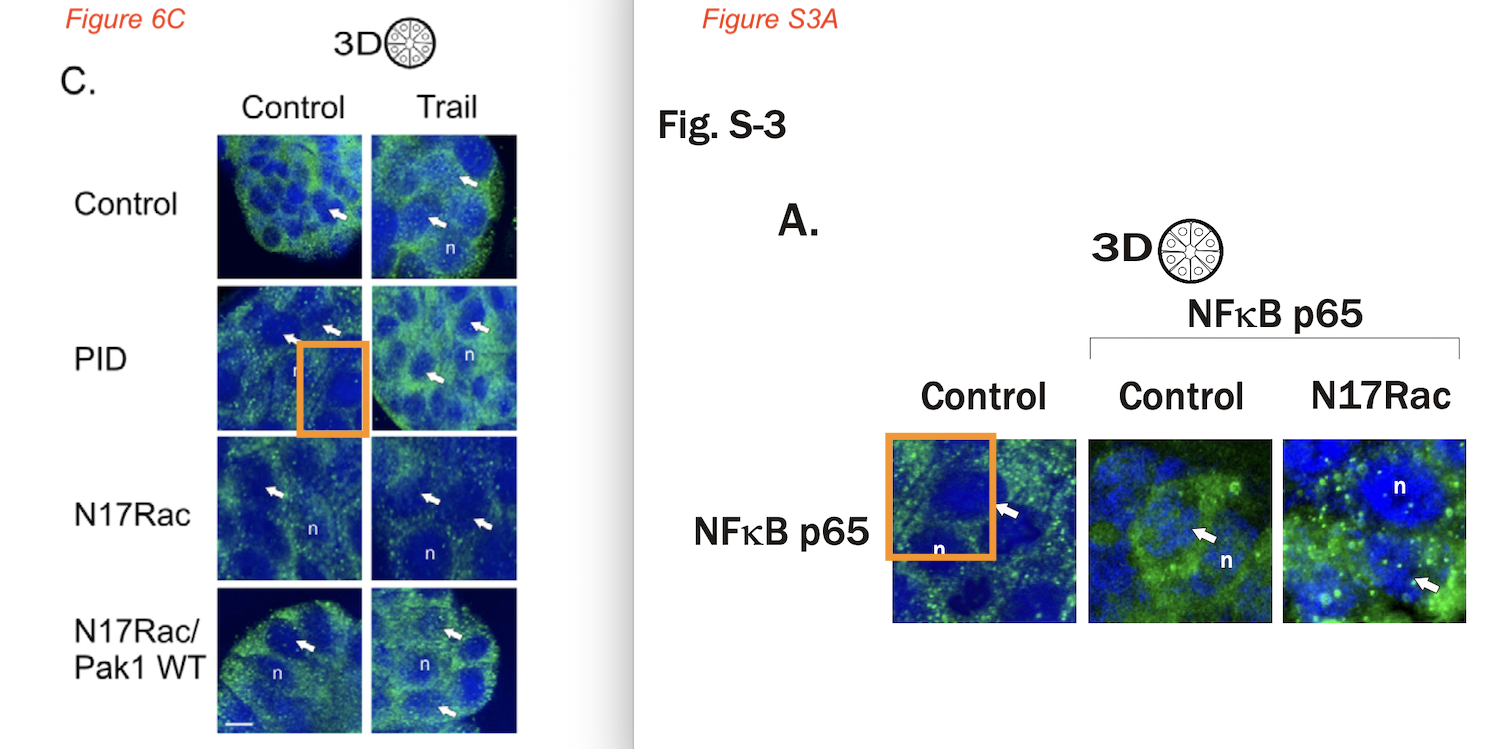
Also here, Weaver insisted in October 2022:
“These are from completely independent experiments My group would never reuse images or blots“
And in February 2023, she exploded on that same PubPeer thread with another rant at Bik (archived copy here):
“I have been pestered by emails from a journalist claiming to work with you accusing me and my group of committing fraud – other comments by anonymous individuals have similarly started piling on I get your intent to troll papers to “search for” evidence of unethical activity However much of your efforts fail to identify such activities and actually seriously hurt those you go after”
Followed by the usual long tirade about “minor unintentional errors”, only a fraction of her 200 papers affected, Weaver’s reputation being tarnished by Bik who is “doing quite a lot of harm” and demands that Bik turns over her software.
The wizard men curing breast cancer
A breast cancer foundation celebrates its research heroes. Read now here about how great US scientists from Harvard, MIT, Weill Cornell and MD Anderson cure cancer.
Actually, I wrote only one email to Weaver at that time. But then I wrote to her again to ask if she was OK, and if she has any actual examples for where Bik’s findings were proven to be “not at all true”.
She replied with a long… poem. Excerpt:
“Besides ucsf is now looking into things
Valerie Weaver, poet
As I was reported to the ethics committee […]
But I run a tight ship and our work is meticulous and carefully done
So any error is just that
Unintentional”
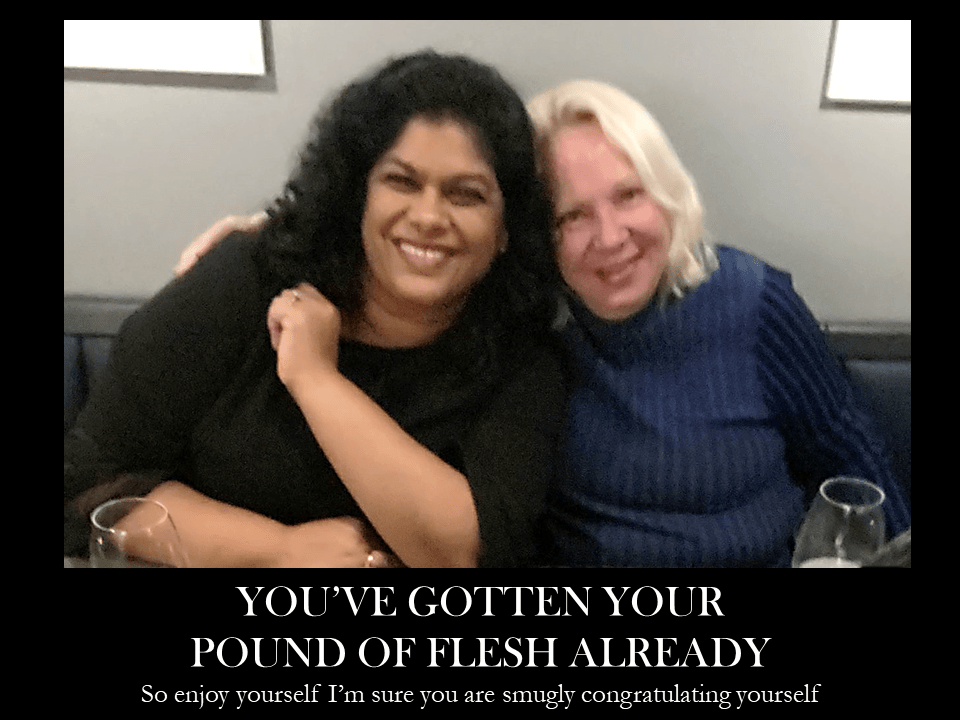
Weaver said in 2022:
“Yes, there remains a glass ceiling for women in science – probably more so in the field of physical sciences – however I do believe that this is changing.[…] I have every reason to believe that more women will rise into senior roles, and an increasing number of qualified women will be recognized for their important contributions.”
Well, she and her friend Weeraratna are at the very top, while those actually qualified women scientists are not. Let’s celebrate this victory for Women in STEM.
I thank all my donors for supporting my journalism. You can be one of them!
Make a one-time donation:
I thank all my donors for supporting my journalism. You can be one of them!
Make a monthly donation:
Choose an amount
Or enter a custom amount
Your contribution is appreciated.
Your contribution is appreciated.
DonateDonate monthly

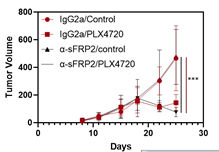






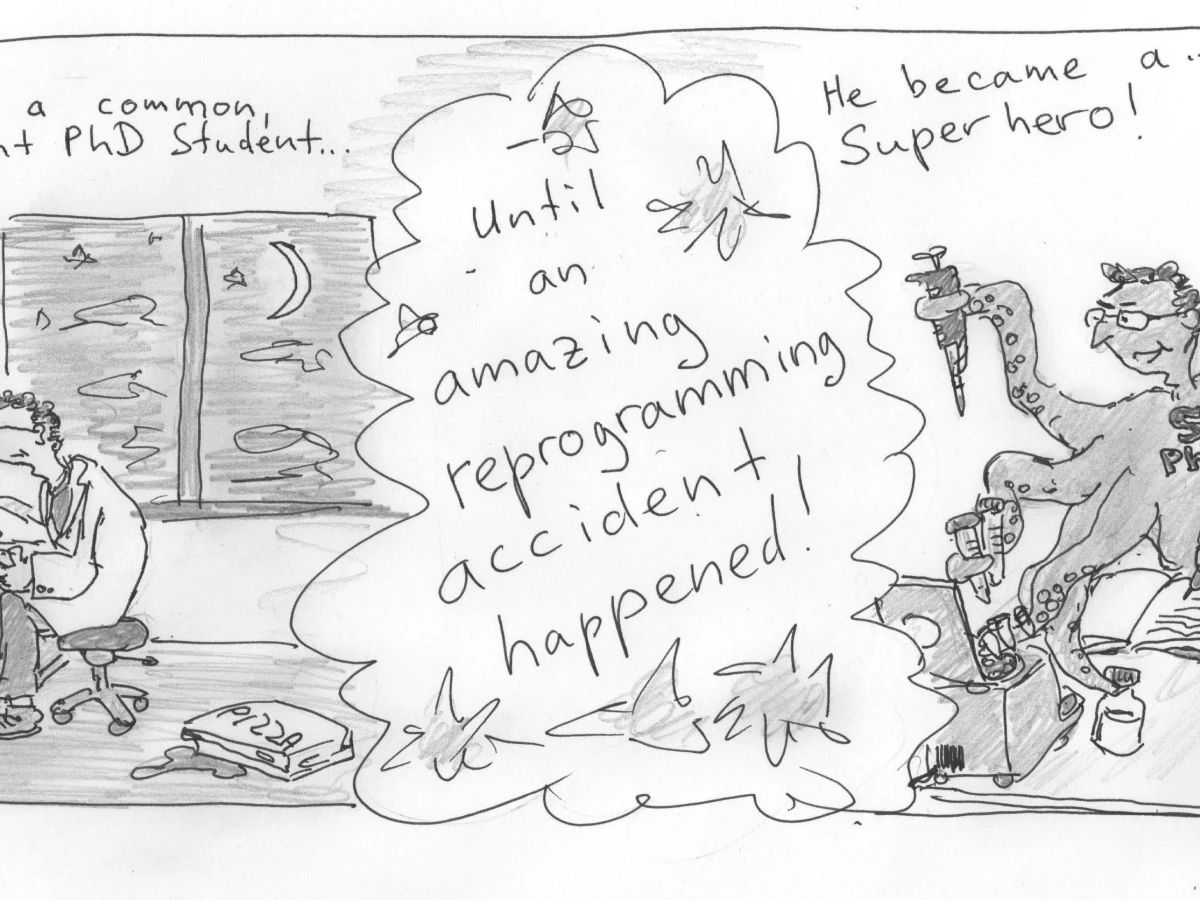
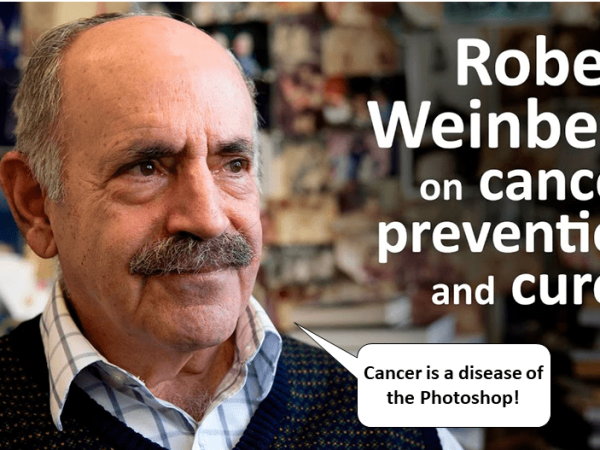

You mention Gregg Semenza, Nobel Prize 2019.
Under Gregg Semenza’s patronage at Johns Hopkins we have another woman in STEM,
Daniele M Gilkes.
https://www.hopkinsmedicine.org/profiles/details/daniele-gilkes
Quite a bit of problematic data.
https://pubpeer.com/search?q=Daniele+Gilkes
LikeLike
“…, I am more concerned about the feelings of women, persons of colour and visa-dependent foreigners, who came to Weeraratna’s elite lab as honest young scientists with ideals and motivations, only to face the research culture which produces such kind of science. How many of them were corrupted into research fraud? How many left in disappointment? How many were made to leave the lab and the country because they didn’t deliver the right results? Those aren’t rhetorical questions, I hope this article finds readers among Weeraratna’s current and past lab members….”
This is an excellent, well-written point. In the interest of sponsoring diversity and inclusion (which is all the rage in US academia right now). I humbly submit that this also can happen when white males are essentially driven out of labs run by foreign nationals for the same reasons . I should know, happened to me twice. But those foreign nationals are not failed scientists, in fact, they are representatives of the American dream. I am the stupid, bitter failed scientist.
LikeLike
15 March 2023 correction for Valerie Weaver.
https://aacrjournals.org/cancerres/article/83/6/974/718572/Correction-Lysyl-Oxidase-like-Protein-LOXL2
LikeLike
Making stuff up counts as gross misconduct.
The home institutions don’t need to pussyfoot around, but terminate ( fire ) people who commit gross misconduct.
LikeLike
Valerie Weaver: “I have been pestered by emails..”
Being autonomous, ignoring well founded criticism is the method to career. Simply ignore your own problematic data.
Time of reckoning and Valerie Weaver doesn’t like it.
LikeLike
Valerie Weaver should the honourable thing before push comes to shove.
LikeLike
Apparently the women that Dr. Weaver claims are facing a glass ceiling in getting heard in science, do not include our mutual friend Dr. Bik.
I ran into similar issues with Dr. John Holloszy on PubPeer several years back (see comment #44 and onwards, here… https://pubpeer.com/publications/D2A46528724F9B59FD58693CA41560). Such diatribes rarely end well for those involved.
LikeLike
” The only hypothesis that I can think of that provides an explanation for Dr. Brookes vitriolic campaign to discredit our research is that he is serving as a hatchet man for an investigator or investigators who published data on the effects of resveratrol that we cannot reproduce, and feel threatened by our paper. ”
Ah yes. Every single science fraudster thinks they are the world’s biggest champion of research ethics.
LikeLike
Wow. I feel like I just popped a zit that keeps spewing out pus.
I look forward to Sara Elizabeth Siegler comments here.
LikeLike
Ashani Weeraratna also is a dept chair:
https://publichealth.jhu.edu/about/leadership/chairs
Hopefully she’ll go “down the tubes” like Augustine Choi, but I’m not holding my breath…
LikeLike
Looked through Ashani’s twitter thread. It appears that she does just about everything else (mom of 4, dept chair, goes to meetings, talks to famous people) except her most important responsibility, which is mentoring the people who work in her lab to do science correctly and honestly, as evidenced above*. She’s out there supporting women in STEM, for example:
….to I presume become leaders of lab’s that also generate irreproducible crap to support their ambitions? In science, its about ambition and ego, and Ashani makes it clear that this isn’t just a white male provenance.
LikeLike
I remember you definition of a good scientist: “somebody who produces reliable data”.
LikeLike
I would say if you are a bench worker, you are a good scientist if you produce data that is reasonably correct (accurate) and reproducible, to the best of your ability. Any other skills you have are icing on the cake that could help you in your career, but are not involved in the definition of a good scientist.
I would say if you are an advisor (PI running a lab) you are a good scientist if you promote a culture where getting reasonably correct (accurate) and reproducible data is foremost. I appreciate that being a successful PI these days has nothing to do with being a good scientist.
Some examples of PI as scientists in my own career:
1.) one advisor allowed me to explore the minimal number of “housekeeping” genes Ct’s I needed to average in so that I could compare target cDNA levels in different tissues. I tested up to 7, but found 4 was really all that was needed in that particular case. He was all right with me doing this experiment, and IMO, behaved like a good scientist.
2.) one advisor yelled at me for doing a standard curve with a western blot. He told me to do a first experiment to get used to the procedure, all of the review articles suggested that I do this. I did this, and he yelled at me–literally—twice in two different lab meetings—saying it was a waste of time. He is, IMO, a bad scientist. Why? Because he did not al all promote best practices to make a reasonable interpretation of western blot data.
In the case of Ashani, she appears to me, at first glance, to be negligent of her duties to make sure data out of her lab is reproducible. Strong evidence of this was the * indicating the bench workers uncertainty as to whether to include the data or not in the final graphs to be interpreted. If Ashani was a good scientist, she would have done herself, or at least suggested to be done, statistical tests of the “outliers” to see whether they should be included in the average, which was apparently not done.
I don’t expect Ashani to stop people from doing photoshop fraud, she probably assumes most people know this but cannot stop someone who really should know better. But she should be available to discuss data honestly with the bench worker to promote representation of the truth, and not some attractive, publishable narrative. If the bench worker didnt not approach her, she should have noticed this in the excel files being uploaded. If she did not do this or promoted an environment where correct interpretation of the data this is not the guiding light of the lab, than she is a bad scientist.
LikeLike
Frances Arnold, 2018 chemistry Noble prize winner had to retract a 2019 science paper titled “Site-selective enzymatic C‒H amidation for synthesis of diverse lactams”, see:
https://www.science.org/doi/10.1126/science.aaw9068
https://www.chemistryworld.com/opinion/frances-arnolds-retraction-and-the-case-for-slow-science/4010994.article
“It is painful to admit, but important to do so. I apologize to all. I was a bit busy when this was submitted, and did not do my job well.”
Only if other so-called scientists or academics had the same attitude when evidence of data manipulation, in form of pubpeer posts or retractions came to light, rather than blaming the junior members of their laboratory, or coming up with some other bullshit excuses (e.g. the conclusions are not affected, raw data not available, calling whistleblowers “streaming turds” or in the case of English Universities, refusing to investigate properly due to some random statute of limitation rule).
If publications are coming out of your lab, you as a supervisor have the responsibility of training your lab members, checking their data regularly (by introduction of electronic lab notebooks, google drives for dropping the data files, weekly/monthly reports etc ). If you or a senior member of your lab cannot do that, then don’t bite off more than what you chew. Leave academia and explore something else!
LikeLike
I’m so glad someone is finally shining the light on how difficult it is now for us heterosexual white males. Almost impossible to succeed, and the data bear this out. Most of the important discoveries have been done by white males, and yet, now, unless you are a woman, a minority or a person with pronouns, you can’t find a job. This need to change and fast. That’s not what I signed up for.
LikeLike
Huh? Cancer research is not just dominated by white males, it is difficult to find someone who is not white, and even much more difficult to find a female POC. And when you find those, they turn out to be crooks as well. Because white males chose them.
LikeLike
She is SMR (Society for Melanoma Research) president too very slow clap. This is absurd. What is about melanoma that brings out the flakes (Her, and Richard Marias/Caroline Springer)?
LikeLike
“I never realized how much more impactful it would be to mentor than to succeed myself.” She may be successful in getting grants (at least for now), but appears to be negligent in her mentoring, if not incompetent. If there is no cognitive dissonance on her part, then I would say she is a deluded narcissist.
LikeLike
The level of ass-kissing by her and of her on twitter is absolutely obscene.
To all of the young scientists out there, this is how you get your grants funded: not by suggesting and doing good science, but kissing the butts of people in power and photoshopping as needed to get papers in Science, Nature, and Cell.
LikeLike
Hot off the press: “Diversity, equity, and inclusion in the melanoma research community”
https://onlinelibrary.wiley.com/doi/full/10.1111/pcmr.13087
Clearly Ashi W is passionate about DEI in academia. If only she was as passionate about reproducible results from her own lab. If she was then the millions given to her lab by the US taxpayer wouldn’t be waisted.
LikeLike
Something malignant about the melanoma research community.
https://www.sgul.ac.uk/profiles/anissa-chikh
https://pubpeer.com/search?q=Anissa+Chikh
LikeLike
Let’s see: the melanoma community has (at least) 3 women of questionable data quality: Ashi W, Anissa C, and Maria G(Girotti). Also, suspicions raised against Caroline S (Springer).
Is this DEI stuff really leading to scientific excellence, as stated by Augustine Choi? Are we really better off with MORE DEI? I think this (albeit limited) 4 point data set may suggest that crappy data or fraud is not fully, or perhaps even majorly, a white male provenance. At least in melanoma research!
LikeLike
Without issuing a formal correction. Cancer Discovery replaced the supplemental data in this paper with new supplemental data in which S1E, S1K, and S3D supplied by the Weeraratna lab. The previously duplicated data from the main figures are now unique!
LikeLike
Oh I see how this switch-er-roo happened. Weeraratna is friends with Lewis Cantley, PhD; Cancer Discovery editor-in-chief and Elizabeth McKenna, Cancer Discoveries Editor. Pictured here together: https://www.aacr.org/blog/2021/06/30/aacrs-cancer-discovery-celebrates-10-years/
LikeLike
John’s Hopkins.
https://www.hopkinsmedicine.org/profiles/details/larissa-shimoda
https://pubpeer.com/search?q=Larissa+shimoda
LikeLike
That should be Johns Hopkins.
Larissa Shimoda all smiles with Gregg Semenza (Johns Hopkins).
https://www.hopkinsmedicine.org/profiles/details/larissa-shimoda
https://pubpeer.com/search?q=Larissa+shimoda
LikeLike
Ashi W has shown, time and time again, that she is a social justice warrior, and continues to do so, below. Fine, Ashi, fine. Now if only you could be a “reproducibility in science” warrior, so your lab cuts back on the level of taxpayer-supported irreproducible crap your lab produces. How to do this? aggressively review all old data by a thorough redo of experiments (from several, different people in the lab), and correct or retract you papers immediately. Ashi W: reproducibility first, always. Committees, papers, tweets, and trips away from the lab to support racial diversity in science may be commendable, but must be down the list. How about a tweet from you confessing to the apparent fraud that has occurred in your lab and a new commitment to good, reproducible science?
LikeLike
Not just taxpayer money. She is a Bloomberg Distinguished Professor. Wonder if Bloomberg knows where his money is going?
LikeLike
Look whose having dinner together! Arturo and Ashi!!! Oh, the irony: a proud defender of science reproducibility and a purveyor of irreproducible data together! One might hope he might take her aside and give her a lesson or two about the seriousness of the misbehavior that occurred on her watch, but I really don’t think that happened. I don’t think they talked about their coworkers Semenza/Gilkes either. Livin’ big with joy at Hopkins on a lot of grant money, expensive dinners, back slapping, and lots of crappy data.
LikeLike
Who, Arturo? He published fraud himself, than lashed out at me for asking him about it. Not even corrections, that how heroic Arturo is.
https://pubpeer.com/search?q=casadevall+vecchiarelli
LikeLike
Expression of Concern in J Cell Sci for Valerie Weaver.
https://journals.biologists.com/jcs/article-abstract/136/20/jcs261623/333532/Expression-of-Concern-6-4-integrin-activates-Rac?redirectedFrom=fulltext
LikeLike
There are potential issues in J. Cell Sci. (2007) 120, 3700-3712 (doi:10.1242/jcs.03484).
A duplication of the control blots in Figs 2A and 4A and an area of possible overlap between the PID/Control panel in Fig. 6C and the NFκB p65/Control panel in Fig. S3A were highlighted to us via the PubPeer website.
The authors have been able to retrieve the original blots for Figs 2A and 4A, showing that they were run on the same gel with a single shared control lane, which is shown in both figures.
However, given the time that has passed, and despite searching for the original images, the original data for Fig. 6 and Fig. S3 could not be found. Without the original data for Fig. 6 and Fig. S3 it is difficult to determine how the issues arose, so the journal is publishing this note to make readers aware of the…
You do not currently have access to this content.
Sign in
Don’t already have an account? Register
LikeLike